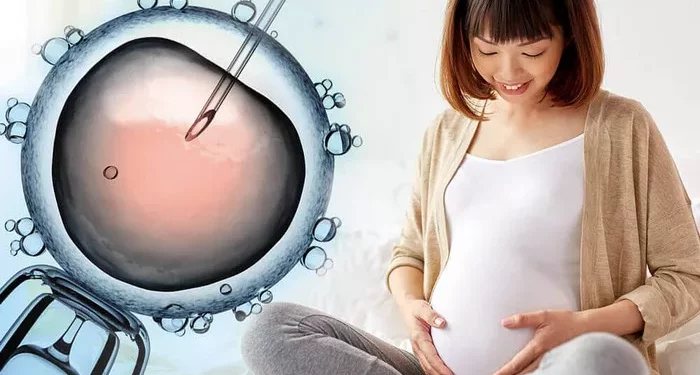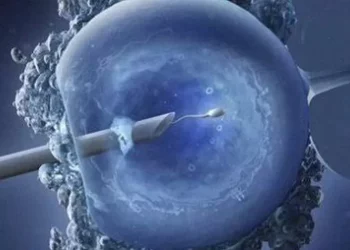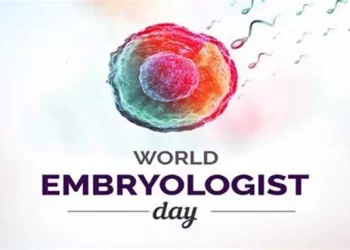In Vitro Fertilization (IVF) is a widely recognized and effective treatment for infertility. It involves combining eggs and sperm outside the body in a laboratory setting to facilitate fertilization. IVF has helped countless couples and individuals achieve pregnancy when other methods have failed. The success rates of IVF vary based on several factors, including the age of the woman, the cause of infertility, and the specific protocols used by the clinic. Generally, younger women have higher success rates, with averages around 40% per cycle for women under 35. IVF is often considered by those who have not achieved pregnancy through less invasive treatments such as medication or intrauterine insemination (IUI), as well as by individuals or couples with specific fertility issues such as blocked fallopian tubes, severe male infertility, or unexplained infertility.
The IVF Process
Step 1: Ovulation Suppression and Stimulation
The first step in the IVF process involves regulating the woman’s menstrual cycle to control the timing of ovulation and ensure the retrieval of multiple eggs. This is achieved through the use of medications that suppress natural hormone production, followed by drugs that stimulate the ovaries to produce multiple eggs.
Medications Used:
1. Gonadotropin-Releasing Hormone (GnRH) Agonists or Antagonists: These medications suppress the body’s natural cycle to prevent premature ovulation.
2. Gonadotropins: These include Follicle Stimulating Hormone (FSH) and Luteinizing Hormone (LH), which stimulate the ovaries to produce multiple eggs. Common medications include Gonal-F, Follistim, and Menopur.
The purpose of this regulation is to increase the number of mature eggs available for fertilization, thereby enhancing the chances of successful fertilization and embryo development.
Step 2: Monitoring Follicle Growth
During stimulation, the development of follicles (fluid-filled sacs in the ovaries that contain the eggs) is closely monitored. This is typically done using transvaginal ultrasounds and blood tests to measure hormone levels.
Follicles and Egg Development:
1. Follicles: The sacs within the ovaries where eggs mature. Monitoring their growth helps determine the optimal time for egg retrieval.
2. Ultrasound Monitoring: Transvaginal ultrasounds are used to visualize the size and number of developing follicles. Typically, 8-14 days of monitoring is required.
3. Hormone Tests: Blood tests measure estrogen levels, which rise as the follicles develop. This helps tailor medication dosages and timing.
See also: How Common is Ectopic Pregnancy with IVF?
Step 3: Egg Retrieval
Once the follicles are deemed mature, a trigger shot of human chorionic gonadotropin (hCG) or a similar medication is administered to finalize the maturation of the eggs. Egg retrieval is scheduled 34-36 hours after this injection.
Egg Retrieval Procedure:
1. Sedation and Ultrasound Guidance: The procedure is performed under sedation. A transvaginal ultrasound probe guides a thin needle through the vaginal wall into the ovaries to aspirate the eggs from the follicles.
2. Possible Side Effects: Patients might experience cramping, bloating, or light bleeding post-procedure, but serious complications are rare.
Step 4: Sperm Retrieval
Sperm is collected on the same day as egg retrieval. Depending on the specific circumstances, this can be done through ejaculation, or in cases of male infertility, through surgical extraction methods.
Sperm Collection Methods:
1. Semen Analysis: Typically involves ejaculation to provide a sample, which is then analyzed and processed to select the healthiest sperm.
2. Surgical Extraction: Techniques such as Testicular Sperm Aspiration (TESA) or Microsurgical Epididymal Sperm Aspiration (MESA) are used if needed.
Step 5: Fertilization
The retrieved eggs and sperm are combined in the laboratory to facilitate fertilization. There are two primary methods used:
Methods of Fertilization:
1. Conventional IVF: Sperm and eggs are mixed together in a culture dish, and fertilization occurs naturally.
2. Intracytoplasmic Sperm Injection (ICSI): A single sperm is injected directly into an egg. This method is often used when there are concerns about sperm quality or previous fertilization failures.
Step 6: Embryo Development
After fertilization, the resulting embryos are cultured in the laboratory for several days, typically 3-5 days.
Embryo Development Process:
1. Monitoring: Embryos are monitored for growth and development. The quality and number of cells are assessed to determine the best candidates for transfer.
2. Preimplantation Genetic Testing (PGT): This optional testing can be performed to screen embryos for genetic abnormalities, increasing the likelihood of a healthy pregnancy.
Step 7: Embryo Transfer
Embryo transfer is a relatively simple procedure that occurs once the embryos have reached the desired stage of development.
Embryo Transfer Procedure:
1. Transfer Process: A thin catheter is inserted through the cervix into the uterus to place the selected embryos. The procedure is usually painless and does not require anesthesia.
2. Number of Embryos: Typically, one or two embryos are transferred to reduce the risk of multiple pregnancies. Remaining viable embryos may be cryopreserved for future use.
See also: How Much Do IVF Shots Cost: A Detailed Breakdown
Step 8: Pregnancy Test
Approximately 10-14 days after the embryo transfer, a blood test is performed to determine if pregnancy has been achieved.
Pregnancy Test Timing:
1. Blood Test: Measures the level of human chorionic gonadotropin (hCG), a hormone produced during pregnancy.
2. Follow-Up: If the test is positive, further monitoring and ultrasounds are conducted to confirm the pregnancy and ensure its progression.
Conclusion
In Vitro Fertilization (IVF) offers a comprehensive and effective solution for many individuals and couples facing infertility. By understanding each step of the process, patients can better prepare for the journey ahead. Consulting with a healthcare professional is crucial for personalized guidance and to discuss the best options based on individual circumstances.
Resources
For further information on infertility and IVF, consider the following organizations:
- American Society for Reproductive Medicine (ASRM)
- Society for Assisted Reproductive Technology (SART)
- Resolve: The National Infertility Association
In conclusion, IVF is a multi-step procedure that requires careful coordination and medical expertise. By following the outlined steps and seeking appropriate support, many individuals and couples can achieve their dream of becoming parents.
Related Topics:
The Success Rate of IVF: A Comprehensive Guide



























